 W
WA state funeral is a public funeral ceremony, observing the strict rules of protocol, held to honour people of national significance. State funerals usually include much pomp and ceremony as well as religious overtones and distinctive elements of military tradition. Generally, state funerals are held in order to involve the general public in a national day of mourning after the family of the deceased gives consent. A state funeral will often generate mass publicity from both national and global media outlets.
 W
WState funerals in Ireland have taken place on the following occasions since 1922.
 W
WRaúl Alfonsín was the president of Argentina from 1983 to 1989. He died on March 31, 2009, aged 82. He had lung cancer and died at his home; a massive candlelight vigil took place in the vicinity of it. Vice President Julio Cobos, the acting president at the time, arranged three days of national mourning and a state funeral at the Palace of the Argentine National Congress. Alfonsín was seen by 40,000 people and the senior politicians of the country; people from other countries also voiced their respect for him. A military escort took his coffin to the La Recoleta Cemetery, and left him at the pantheon for the veterans of the Revolution of the Park.
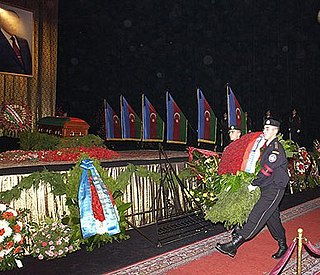 W
WHeydar Aliyev, the former President of Azerbaijan, died on 12 December 2003 in the Cleveland Clinic at 10 am local time from heart failure at the age of 80. On 14 December, the coffin of the deceased was taken to Baku.
 W
WBenigno Simeon Cojuangco Aquino III, also known as Noynoy Aquino and colloquially as PNoy, was a Filipino politician who served as the 15th president of the Philippines from 2010 to 2016. Before being elected president, Aquino was a member of the House of Representatives and Senate from 1998 to 2010, and also served as a deputy speaker of the House of Representatives from 2004 to 2006.
 W
WCorazon Cojuangco-Aquino, the eleventh President of the Philippines, died on August 1, 2009, at the Makati Medical Center in Makati of cardiorespiratory arrest after being in hospital since June 2009, and was first diagnosed with colorectal cancer in 2008.
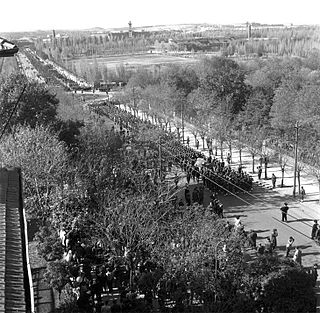 W
WMustafa Kemal Atatürk, first President of the Republic of Turkey, died at the Dolmabahçe Palace, his official residence in Istanbul, on 10 November 1938. His state funeral was held in the capital city of Ankara on 21 November, and was attended by dignitaries from seventeen nations. His body remained at the Ethnography Museum of Ankara until 10 November 1953, the fifteenth anniversary of his death, when his remains were carried to his final resting place at Anıtkabir.
 W
WKing Bhumibol Adulyadej of Thailand died at the age of 88 on 13 October 2016, after a long illness. A year-long period of mourning was subsequently announced. A royal cremation ceremony took place over five days at the end of October 2017. The actual cremation, which was not broadcast on television, was held in the late evening of 26 October 2017. Following cremation his remains and ashes were taken to the Grand Palace and were enshrined at the Chakri Maha Phasat Throne Hall, the Royal Cemetery at Wat Ratchabophit and the Wat Bowonniwet Vihara Royal Temple. Following burial, the mourning period officially ended on midnight of 30 October 2017 and Thais have resumed wearing regular colours.
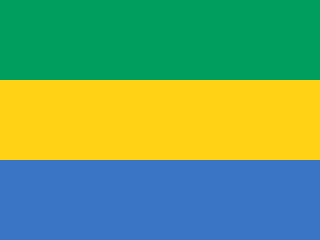 W
WThe second President of Gabon, Omar Bongo, died in Spain on June 8, 2009, after having suffered from colorectal cancer. A month of mourning and state funeral, spanning June 11 to 18th, followed.
 W
WOn 10 November 1982, Leonid Ilyich Brezhnev, the third General Secretary of the Communist Party of the Soviet Union (CPSU) and the fifth leader of the Soviet Union, died aged 75, a month before his 76th birthday, after suffering a heart attack following years of serious ailments. His death was officially acknowledged on 11 November simultaneously by Soviet radio and television. After five days of national mourning, Brezhnev was given a state funeral and then buried in the Kremlin Wall Necropolis. Yuri Andropov, Brezhnev's eventual successor as general secretary, was chairman of the committee in charge of managing Brezhnev's funeral, held on 15 November 1982, five days after his death.
 W
W90-year old former First Secretary of the Communist Party of Cuba and President of the Council of State, Fidel Castro died of natural causes at 22:29 (CST) in the evening of 25 November 2016. His brother, the then-President of the State Council and then-First Secretary Raúl Castro, made an announcement about his death on state television. One of the most controversial political leaders of his era, Castro both inspired and dismayed people across the world during his lifetime. The London Observer stated that he proved to be "as divisive in death as he was in life", and that the only thing that his "enemies and admirers" agreed upon was that he was "a towering figure" in world affairs who "transformed a small Caribbean island into a major force in world affairs". The Daily Telegraph noted that across the world he was "either praised as a brave champion of the people, or derided as a power-mad dictator." Castro's body was cremated and his ashes were interred in Santiago de Cuba on 4 December 2016, and hundreds of thousands of Cubans commemorated the event.
 W
WHugo Chávez, the 45th President of Venezuela, died on 5 March 2013 at 16:25 VET in Caracas, Venezuela from cancer at the age of 58. His death triggered a presidential election which was constitutionally required to be called within 30 days. Nicolás Maduro served as interim president following Chávez's death until 14 April, because the Vice President did not want to take charge of the country as Chávez had nominated Nicolas Maduro as a successor.
 W
WKim Il-sung died on the early morning of 8 July 1994 at age 82. North Korea's government did not report the death for more than 34 hours after it occurred. An official mourning period was declared from 8–17 July, during which the national flag was flown at half mast throughout the country, and all forms of amusement and dancing were prohibited.
 W
WMao Zedong, also known as Chairman Mao, was a Chinese communist revolutionary who became the founder of the People's Republic of China (PRC), which he ruled as the Chairman of the Communist Party of China from its establishment in 1949 until his death on September 9, 1976, at the age of 82.
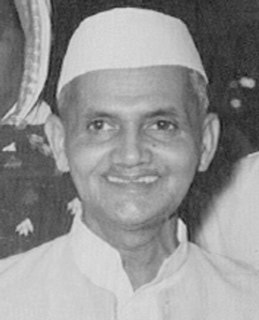 W
WLal Bahadur Shastri was an Indian statesman who served as the second Prime Minister of India. He promoted the White Revolution – a national campaign to increase the production and supply of milk – by supporting the Amul milk co-operative of Anand, Gujarat and creating the National Dairy Development Board. Underlining the need to boost India's food production, Shastri also promoted the Green Revolution in India in 1965. This led to an increase in food grain production, especially in Punjab, Haryana and Uttar Pradesh.
 W
WAdrian Donohoe was an Irish detective in the Garda Síochána based at Dundalk Garda Station in County Louth, who was fatally shot in Bellurgan on 25 January 2013 during a robbery by an armed gang of five people on a credit union. He was the first garda officer to be murdered in the line of duty since 1996, and was afforded a full state funeral.
 W
WThe funeral of Qasem Soleimani, an Iranian major general in the Islamic Revolutionary Guard Corps (IRGC), was held from 4 to 7 January 2020 in some cities in Iraq and Iran – including Baghdad, Karbala, Najaf, Ahvaz, Mashhad, Tehran, Qom, and his hometown Kerman. The funeral ceremony of Soleimani in Tehran was described as "the largest in Iran since the funeral of Grand Ayatollah Ruhollah Khomeini", founder of the Islamic Republic of Iran, in 1989.
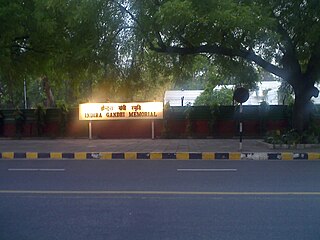 W
WIndian Prime Minister Indira Gandhi was assassinated at 9:29 a.m. on 31 October 1984 at her residence in Safdarjung Road, New Delhi. She was killed by her Sikh bodyguards Satwant Singh and Beant Singh in the aftermath of Operation Blue Star. Operation Blue Star was an Indian military action carried out between 1 and 8 June 1984, ordered by Indira Gandhi to remove Jarnail Singh Bhindranwale and his followers from the holy Golden temple of the Harmandir Sahib in Amritsar, Punjab. The collateral damage included the death of many pilgrims, as well as damage to the Akal Takht. The military action on the sacred temple was criticized by Sikhs both inside and outside India.
 W
WOn 7 January 1989, Hirohito, the 124th Emperor of Japan according to the traditional order of succession, died in his sleep at 6:33 am after suffering from intestinal cancer for some time. He was 87. The late emperor's state funeral was held on 24 February, when he was buried near his parents at the Musashi Imperial Graveyard in Hachiōji, Tokyo.
 W
WGarda Colm Horkan was a detective in the Garda Síochána, the national police service of Ireland, who was shot dead by a 43-year-old man in Castlerea, County Roscommon, Ireland on 17 June 2020, while on an anti-crime patrol.
 W
WThe funeral of Alija Izetbegović, the first Chairman of the Presidency of Bosnia and Herzegovina, was held on 22 October 2003, three days after his death on 19 October in Sarajevo, Bosnia and Herzegovina. His funeral drew many Bosnian officials, dignitaries from 44 foreign countries, 105 members of the Grand National Assembly of Turkey and between 100,000 and 150,000 people, with his family receiving over 4,000 telegrams. Over 400 journalists attended the funeral as it was broadcast live on TV with 37 cameras.
 W
WThe funeral of Pope John Paul II was held on 8 April 2005, six days after his death on 2 April. The funeral was followed by the novemdiales devotional in which the Catholic Church observes nine days of mourning.
 W
WLech Kaczyński, the fourth President of the Republic of Poland, died on 10 April 2010, after a Polish Air Force Tu-154 crashed outside of Smolensk, Russia, killing all 96 aboard. His wife, economist and First Lady Maria Kaczyńska, was also among those killed.
 W
WOn 3 June 1989, at 22:20 IRST, Grand Ayatollah Ruhollah Khomeini, leader of the Iranian Revolution and the first Supreme Leader and founder of the Islamic Republic of Iran, died in Jamaran, Greater Tehran aged 86 after spending eleven days at a private hospital, near his residency, after suffering five heart attacks in ten days. Other sources put his age at 89, and list the cause of death as bleeding in the digestive system.
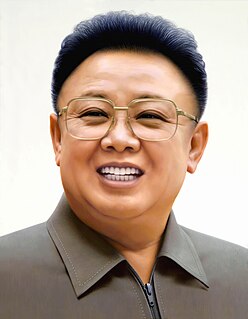 W
WThe death of Kim Jong-il was reported by North Korean state television news on 19 December 2011. The presenter Ri Chun-hee announced that he had died on 17 December at 8:32 am of a massive heart attack while travelling by train to an area outside Pyongyang. Reportedly, he had received medical treatment for cardiac and cerebrovascular diseases. During the trip though, he was said to have had an "advanced acute myocardial infarction, complicated with a serious heart shock".
 W
WNéstor Kirchner, former President of Argentina, died of heart failure on the morning of 27 October 2010 at the Jose Formenti hospital in El Calafate, Santa Cruz Province at the age of 60. Efforts to revive him were unsuccessful. His wife, President Cristina Fernández de Kirchner, was present with him when he died. He was expected to run for president in 2011.
 W
WLee Kuan Yew, the founding Prime Minister of Singapore and former leader of the People's Action Party, died at the age of 91 on 23 March 2015, after being hospitalised with severe pneumonia on 5 February that year. Many world leaders issued public condolences.
 W
WOn 21 January 1924, at 18:50 EET, Vladimir Lenin, leader of the October Revolution and the first leader and founder of the Soviet Union, died in Gorki aged 53 after falling into a coma. The official cause of death was recorded as an incurable disease of the blood vessels. Lenin was given a state funeral and then buried in a specially erected mausoleum on 27 January. A commission of the Central Committee of the RCP(b) was in charge of organising the funeral.
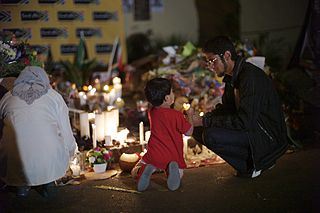 W
WOn 5 December 2013, Nelson Mandela, the first President of South Africa to be elected in a fully representative democratic election, as well as the country's first black head of state, died at the age of 95 after suffering from a prolonged respiratory infection. He died at around 20:50 local time (UTC+2) at his home in Houghton, Johannesburg, surrounded by family. His death was announced by then President Jacob Zuma on national television at 23:45. Reactions from governments, international organizations, and notable individuals, gained worldwide media coverage.
 W
WPeter II was the last king of Yugoslavia, reigning from October 1934 until his deposition in November 1945. He was the last reigning member of the Karađorđević dynasty.
 W
WOn 8 January 2017, Akbar Hashemi Rafsanjani, the fourth President of Iran and the country's Chairman of Expediency Discernment Council, died at the age of 82 after suffering a heart attack. He was transferred unconscious to a hospital in Tajrish, north Tehran. Attempts at cardiopulmonary resuscitation for more than an hour trying to revive him were unsuccessful and he died at 19:30 local time (UTC+3:30).
 W
WFormer Israeli Prime Minister Ariel Sharon died on 11 January 2014. His death received a number of international responses. His state funeral was held on 13 January in accordance with Jewish burial customs.
 W
WOn 15 October 2012, former Cambodian King and Prime Minister Norodom Sihanouk died at the age of 89, in Beijing, China, after suffering health issues. His death was announced by Deputy Prime Minister Nhek Bun Chhay. His body was brought back on 17 October 2012 by King Norodom Sihamoni and Prime Minister Hun Sen. State flags flew at half mast, and the government announced a 7-day mourning period for the former king.
 W
WJoseph Stalin, the second leader of the Soviet Union, died on 5 March 1953 at the Kuntsevo Dacha aged 74 after suffering a stroke. He was given a state funeral with four days of national mourning declared. His body was subsequently embalmed and interred in Lenin's & Stalin's Mausoleum until 1961. Nikita Khrushchev, Georgy Malenkov, Vyacheslav Molotov and Lavrentiy Beria were in charge of organizing the funeral.
 W
WCarla Maria Zampatti, was an Italian-born Australian fashion designer and businesswoman, and executive chair of the fashion label Carla Zampatti Pty Ltd. whose clothes were known for being beautiful but practical.
 W
WThai royal funerals are elaborate events, organised as royal ceremonies akin to state funerals. They are held for deceased members of the Royal Family, and consist of numerous rituals which typically span several months to over a year. Featuring a mixture of Buddhist and animist beliefs, as well as Hindu symbolism, these rituals include the initial rites that take place after death, a lengthy period of lying-in-state, during which Buddhist ceremonies take place, and a final cremation ceremony. For the highest-ranking royalty, the cremation ceremonies are grand public spectacles, featuring the pageantry of large funeral processions and ornate purpose-built funeral pyres or temporary crematoria known as merumat or men. The practices date to at least the 17th century, during the time of the Ayutthaya Kingdom. Today, the cremation ceremonies are held in the royal field of Sanam Luang in the historic centre of Bangkok.
 W
WThe funeral of Josip Broz Tito, President of Yugoslavia, was held on 8 May 1980, four days after his death on 4 May. His funeral drew many world statesmen, both of non-aligned and aligned countries. Based on the number of attending politicians and state delegations, it is the largest state funeral in history. This included four kings, 31 presidents, six princes, 22 prime ministers, and 47 ministers of foreign affairs, from both sides of the Iron Curtain and beyond. In total, 128 countries out of the 154 UN members at the time were represented. Also present were delegates from seven multilateral organizations, six movements and 40 political parties.
 W
WBoris Yeltsin, the first President of Russia, died of cardiac arrest on April 23, 2007, twelve days after being admitted to the Central Clinical Hospital in Moscow. Yeltsin was the first Russian head of state to be buried in a church ceremony since Emperor Alexander III, 113 years prior.